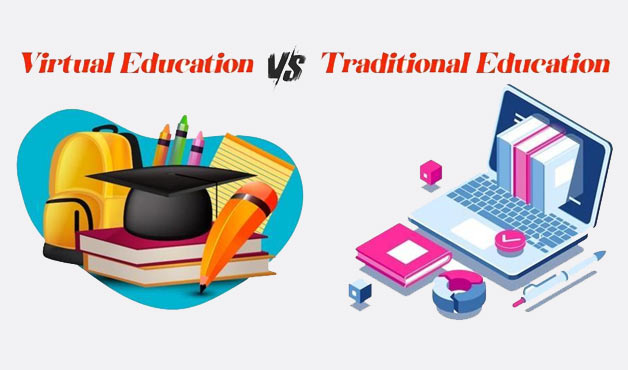Virtual Education
Virtual education, also known as online education or distance learning, is a form of education that takes place over the Internet. This type of education has become increasingly popular in recent years, as technology has made it easier for people to access educational resources and connect with teachers and other students from anywhere in the world.
There are several key features of virtual education that set it apart from traditional education:
Delivery: Virtual education is delivered through a variety of online platforms, such as learning management systems (LMS), video conferencing software, and social media. These platforms allow students to access course material and interact with teachers and peers from anywhere with an internet connection.
Flexibility: Virtual education offers more flexibility than traditional education, as students can access course material and lectures at any time, from anywhere. This allows students to balance their education with work, family, and other commitments.
Personalization: Virtual education can be highly personalized, as students can choose the courses, programs, and instructional materials that best suit their individual needs and learning styles.
Technology: Virtual education relies heavily on technology, such as computers, smartphones, and the Internet. As a result, students in virtual education programs need to have a certain level of technical proficiency to succeed.
Assessment: Virtual education often uses different methods of assessment than traditional education, such as quizzes, online assignments, and discussion forums. These assessments are typically designed to measure a student’s understanding of the material and ability to apply it in real-world situations.
Virtual education has several benefits, including:
Accessibility: Virtual education makes education more accessible to people who may not have the opportunity to attend traditional schools, such as those who live in remote areas or have disabilities.
Affordability: Virtual education can be more affordable than traditional education, as it eliminates the costs associated with commuting, housing, and on-campus fees.
Flexibility: Virtual education offers more flexibility than traditional education, allowing students to learn at their own pace and on their own schedule.
Variety: Virtual education offers a wide variety of courses and programs, allowing students to choose the topics that interest them and advance their careers.
However, virtual education also has some potential drawbacks, such as:
Limited interaction: Virtual education can be less social than traditional education, as it may not offer as many opportunities for face-to-face interaction with teachers and peers.
Technology issues: Technical problems, such as internet outages or software glitches, can disrupt the learning process and cause frustration for students.
Self-discipline: Virtual education requires more self-discipline than traditional education, as students need to be motivated and proactive to stay on track and complete their coursework.
Traditional Education
Traditional education, also known as classroom education or face-to-face education, is a form of education that takes place in a physical classroom with a teacher and students. This type of education has been the standard model of education for centuries, and it remains the most popular form of education in many parts of the world.
There are several key features of traditional education that set it apart from virtual education:
Delivery: Traditional education is delivered in a physical classroom, with teachers and students interacting face-to-face. This allows for real-time feedback and discussion and creates a social learning environment.
Structure: Traditional education is highly structured, with set schedules and curriculum standards. This provides a clear framework for learning and allows teachers to ensure that students are progressing at an appropriate pace.
Personalization: Traditional education can be personalized to some extent, as teachers can provide individual attention and support to students who are struggling or need extra help.
Assessment: Traditional education typically uses a variety of assessments, such as tests, quizzes, essays, and class participation, to measure a student’s understanding of the material and ability to apply it in real-world situations.
Traditional education has several benefits, including:
Interaction: Traditional education provides more opportunities for face-to-face interaction with teachers and peers, which can be beneficial for students who thrive in social environments.
Structure: Traditional education provides a clear structure for learning, which can be helpful for students who need guidance and direction.
Learning experience: Traditional education can provide a more immersive learning experience, with hands-on activities and real-world examples.
Accountability: Traditional education provides a level of accountability, as students are expected to attend classes and complete assignments on a regular basis.
However, traditional education also has some potential drawbacks, such as:
Accessibility: Traditional education may not be accessible to everyone, especially those who live in remote areas or have disabilities.
Cost: Traditional education can be expensive, as it requires students to pay for tuition, textbooks, housing, and other fees.
Flexibility: Traditional education offers less flexibility than virtual education, as students are expected to attend classes at specific times and locations.
Personalization: Traditional education may not be as personalized as virtual education, as teachers may have limited time and resources to provide individual attention to each student.

